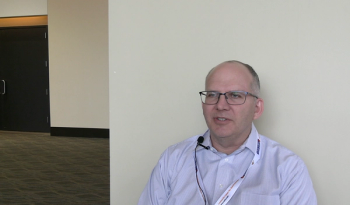
In Vivo Label-Free Spectroscopic Imaging for Biology and Medicine
Label-free imaging using intrinsic signals can be used to examine the behavior of molecular species in live cells, and vibrational imaging is an informative technique because each molecule has a distinct vibrational fingerprint. Ji-Xin Cheng is a Professor of Biomedical Engineering, Chemistry, and Electrical and Computer Engineering at Purdue University. He is the recipient of the 2015 Coblentz Society Craver Award, which recognizes young individuals who have made significant contributions in applied analytical vibrational spectroscopy. Prof. Cheng and his group develop such label-free spectroscopic imaging technologies to monitor cellular states on a microsecond scale and to diagnose lipid-laden plaques in cardiovascular diseases. He recently spoke to us about two of his recent studies.
A recent paper from your group (1) describes the imaging of lipid-laden atherosclerotic plaque using a Raman laser system and an intravascular photoacoustic catheter. Can you please briefly describe this system and the type of information obtained using it?
Our system employs a pulsed laser to excite the overtone vibration of C-H bonds in lipids. The vibrational energy is quickly relaxed into heat, causing tissue expansion and retraction, and subsequent generation of an ultrasound signal that can be detected by a transducer. Our device is able to map the lipid deposition inside an arterial wall, which is a key feature of a vulnerable plaque.
Optical coherence tomography (OCT) is an imaging technique commonly used in modern medicine to identify arterial plaques. What are the advantages of your system over intravascular OCT for analyzing lipid-laden plaque in arteries?
Our system provides a larger penetration depth compared to OCT. Moreover, our method offers chemical bond selectivity and allows us to map the chemical content of a deep tissue. Such information is not present in OCT.
In a second recent study (2), your group used a homebuilt tuned amplifier array to achieve microsecond-scale Raman imaging of lipid droplets in single live cells. How does this approach improve on the detection sensitivity and imaging speed of stimulated Raman scattering microscopy for this application?
High-speed stimulated Raman scattering microscopy has been implemented in a single-color mode, where all the excitation energy is focused on one Raman shift. Such single-color excitation is not able to tell the composition of an intracellular organelle. In our method, by using a lab-built 32-channel tuned amplifier array to extract a stimulated Raman spectrum in the fingerprint vibration region, we are able to distinguish different molecular species and how they change during a cellular process.
What are the implications of this study in terms of the use of the technique for mapping of intracellular compartments or high-throughput spectral profiling of flowing cells?
Mapping the composition of intracellular compartments will help us understand the function of these compartments in health and diseases. For example, we are now studying how cholesterol is partitioned inside a healthy cell and in NPC disease (Nieman-Pick disease type C). High-throughput spectral profiling of flowing cells will allow label-free quantitative detection of cellular state based on their metabolic contents. For example, this method can be used for detection and separation of cancer stem cells without any labeling.
What are the next steps in your research?
My group is devoted to transforming molecular spectroscopy into in vivo imaging platforms. We have two major directions. The first direction aims to uncover the secrets inside cells and to translate the discoveries into new treatments. Our recent finding of altered cholesterol metabolism in human prostate cancer presents a good example (3). The second direction is to convert spectroscopic imaging platforms into mobile user-friendly medical devices for in vivo diagnosis of human diseases. Our development of the intravascular vibrational photoacoustic catheter for detection of lipid plaque presents an example of our efforts along this direction.
References
(1) P. Wang, T. Ma, M.N. Slipchenko, S. Liang, J. Hui, K.K. Shung, S. Roy, M. Sturek, Q. Zhou, Z. Chen, and J.-X. Cheng, Sci. Rep.4, 6889 (2014); DOI: 101038/srep06889.
(2) C.-S. Liao, M.N. Slipchenko, P. Wang, J. Li, S.-Y. Lee, R.A. Oglesbee, and J.-X. Cheng, Light: Science and Applications4, e265 (2015); DOI: 10.1038/lsa.2015.38.
(3) S. Yue, J. Li, S.-Y. Lee, H.J. Lee, T. Shao, B. Song, L. Cheng, T.A. Masterson, X. Liu, T.L. Ratliff, and J.-X. Cheng, Cell Metabolism 19, 393–406 (2014).
Newsletter
Get essential updates on the latest spectroscopy technologies, regulatory standards, and best practices—subscribe today to Spectroscopy.





